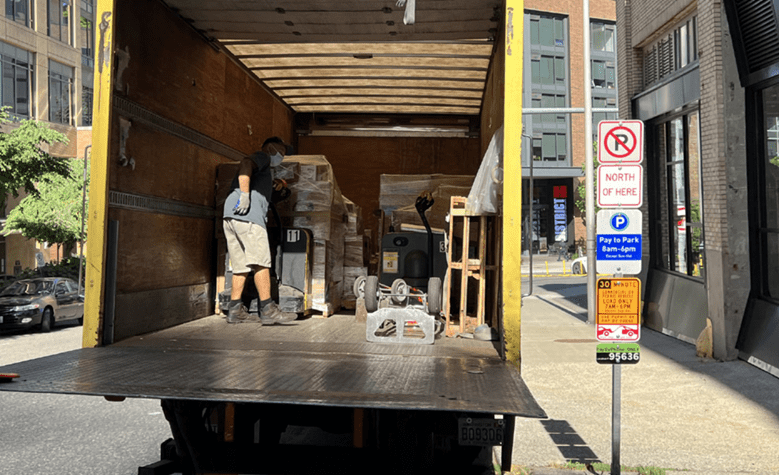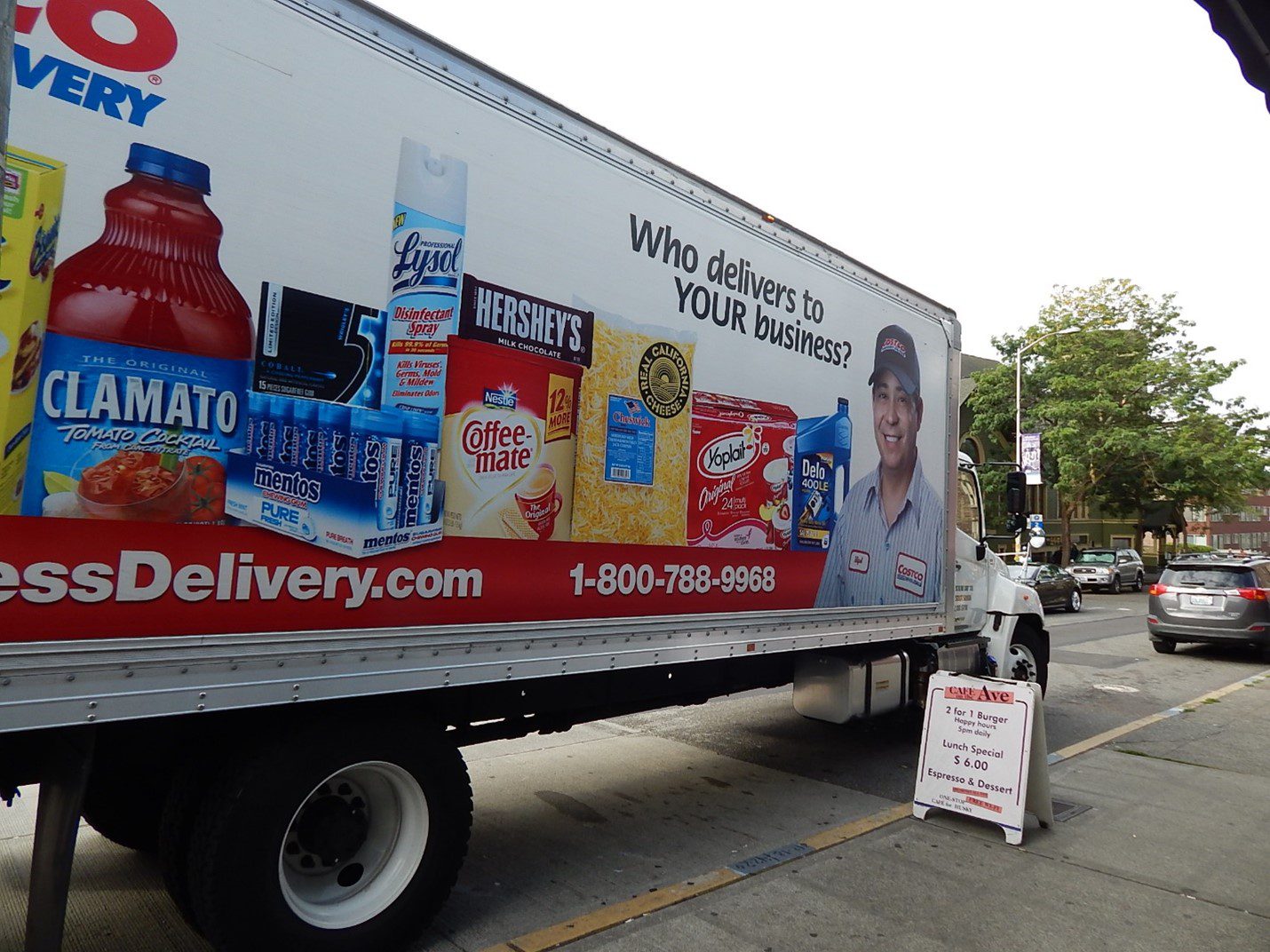 A large commercial truck delivers goods to a business in Seattle. Photo: SDOT.
A large commercial truck delivers goods to a business in Seattle. Photo: SDOT. Blog stats: 1,000 words | 6-minute read
At-a-glance:
- Deliveries get goods to people and support Seattle’s economy, but can contribute to greenhouse gases and climate pollution.
- We recently studied how to reduce freight emissions by introducing zero-emission load zones and expanding e-cargo bike delivery, as detailed in our new report, fact sheet, and web page.
- In this blog post, you can read about our:
- Our study is part of a national and international network of C40 Cities working to address climate change. It also helps advance Seattle’s climate goals, including Mayor Harrel’s 2022 Climate Executive Order.
- This work aligns with our new federal ‘SMART’ grant by identifying solutions to improve urban freight delivery.
The challenge and our goals
Freight and commercial goods are an important part of Seattle’s economy. However, almost all of the commercial deliveries to bring packages to residents and businesses are made by gas or diesel-powered vans and trucks, which contribute to poor air quality, congestion, and safety issues.
Meanwhile, Seattle has set ambitious goals to address the climate emergency. The City of Seattle’s Transportation Electrification Blueprint identifies an ambitious goal that 30 percent of all commercial goods delivery be zero-emission by 2030. Mayor Harrell also issued a Climate Executive Order in 2022 that sets key actions to reduce or eliminate greenhouse gas emissions equitably and includes incentivizing zero-emission delivery options at the curb.
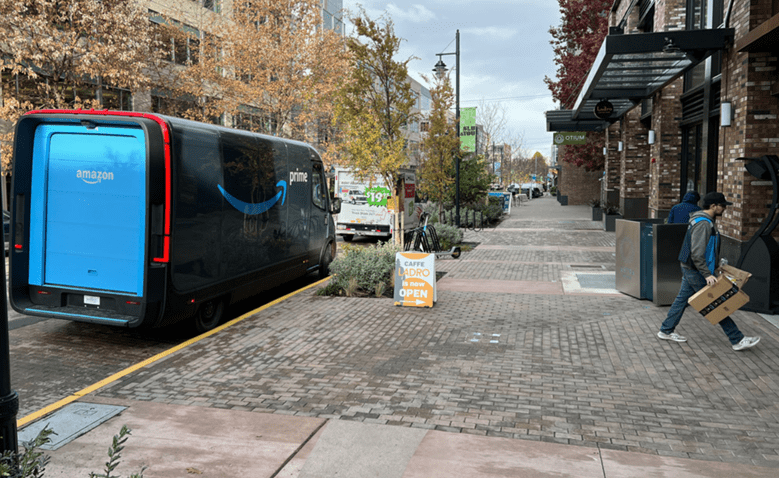
Studying a path forward
To better understand how to advance freight decarbonization, we partnered with C40 Cities and Walker Consultants to conduct a study exploring opportunities to implement zero-emission loading zones and enable e-cargo bike delivery in Seattle.
Through stakeholder outreach, research, interviews with peer cities, and data collection, we have identified the necessary policy, administration, and engagement considerations to begin implementation.
Stakeholder outreach revealed that the Seattle business community is interested in and excited to move towards zero-emission options but may need program assistance from the City. A small number of companies in Seattle currently operate electric vehicles and the market is still largely developing options to enable this transition.
“We are excited to expand our e-bike deliveries to all of our locations. We know that the future of food deliveries must include alternative solutions to combustion engines. It is exciting to see a time when we are moving our business toward zero emissions.”
– Matt Galvin, Co-Owner, Pagliacci Pizza
You can read more about the study, its methodology, and key takeaways in this case study fact sheet.
What is C40 Cities?
C40 is a network of mayors of nearly 100 world-leading cities collaborating to deliver the urgent action needed right now to confront the climate crisis. C40’s mission is to halve the emissions of its member cities within a decade, while improving equity, building resilience, and creating the conditions for everyone, everywhere to thrive. Source: https://www.c40.org/about-c40/
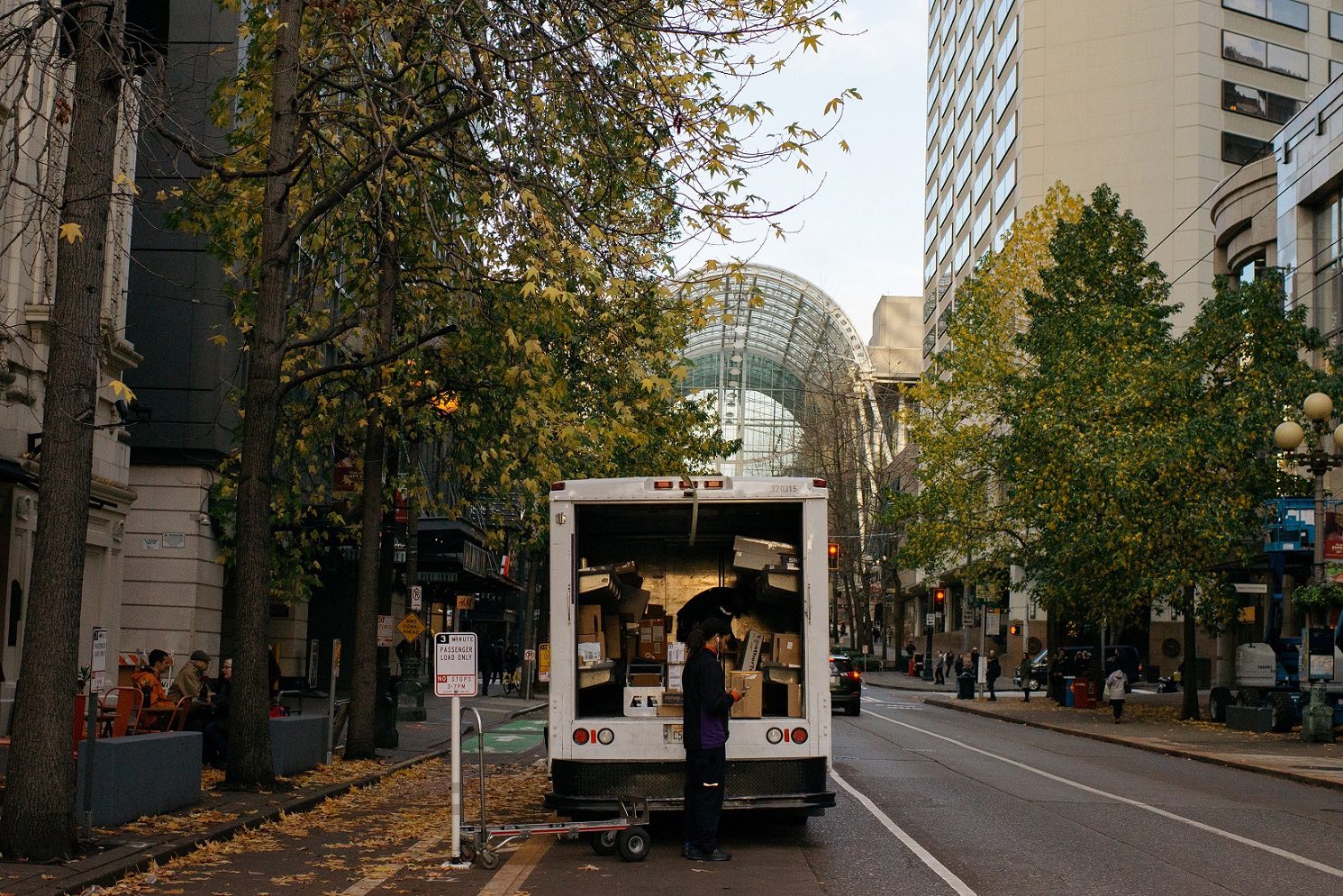
Recommendations from the study
Our study identified recommendations informed by lessons from five peer city programs, business needs in our community, and existing policy structures in Seattle. The below recommendations identify potential ways the City can partner with and incentivize the private sector to make investments in their fleets and systems while ensuring that City programs support small to medium-sized businesses.
Some involve policy choices while others would require identification of new resources for implementation. Over the next several months, we will work to develop a plan to determine which can be prioritized for earlier implementation. You can find a more detailed chart, including recommended implementation steps, on page 4 of the full report.
#1: Recommendations to support zero-emission commercial delivery and incentivize companies to electrify their fleets
- Liaise with Seattle companies to encourage fleet right-sizing and electrification; identify key delivery routes where new load zones would create efficiency.
- Develop new loading zone standards and explore new loading zone types to incentivize zero-emission activity at the curb.
- As part of our new ‘SMART’ grant, research Commercial Vehicle Loading Zone permit structures that encourage electric vehicle transitions.
#2: Recommendations to support e-cargo bike delivery
- Launch a Commercial E-Cargo Bike Program, to include new permitting structures and loading/parking designation at the curb.
- Facilitate the development of zero-emission neighborhood delivery hubs, which would likely require additional funding along with external partnerships with off-street parking operators.
- Seek funding to pilot a small-medium business e-cargo bike lending library, where businesses can rent e-cargo bikes for delivery.
Implementation of report recommendations will require potential amendments to the Seattle Municipal Code and some are not yet resourced. Each of these recommendations could potentially eliminate between 10 and 30 million pounds of carbon dioxide emissions by 2030. These changes would also reduce air pollution from delivery trucks, which would have an immediate positive health impact.
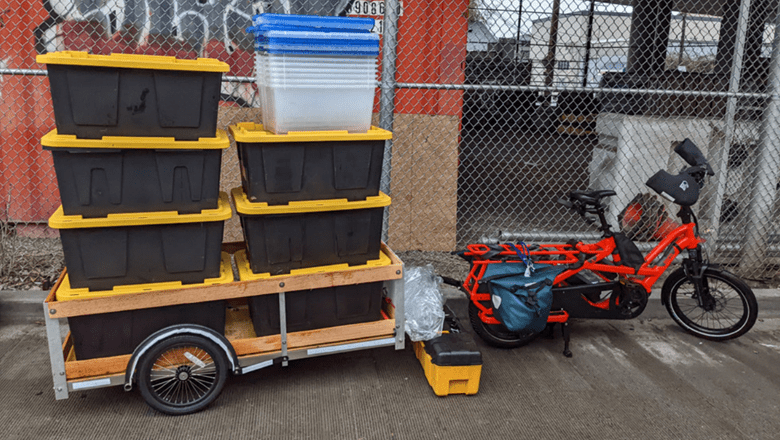
Next steps
Implementation of these plans will be a multi-year effort, ensuring that both private sector partners and our local business community are supported in the transition, and allowing time to explore additional funding.
Following this study, we expect to review the recommendations and begin implementation planning, incorporating other urban goods and paid parking strategies within the developing Seattle Transportation Plan Curbside Element and Seattle’s Climate Emergency Response Framework (CERF).
We plan to be a liaison for those looking for zero-emission resources to right-size and electrify fleets and support those interested in testing pilot efforts in Seattle.
To stay informed, you can visit our website or sign up for our email list. Thank you for your interest, and we look forward to undertaking this important work!
